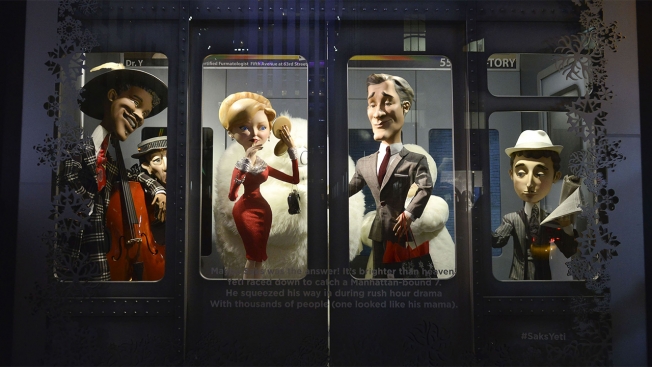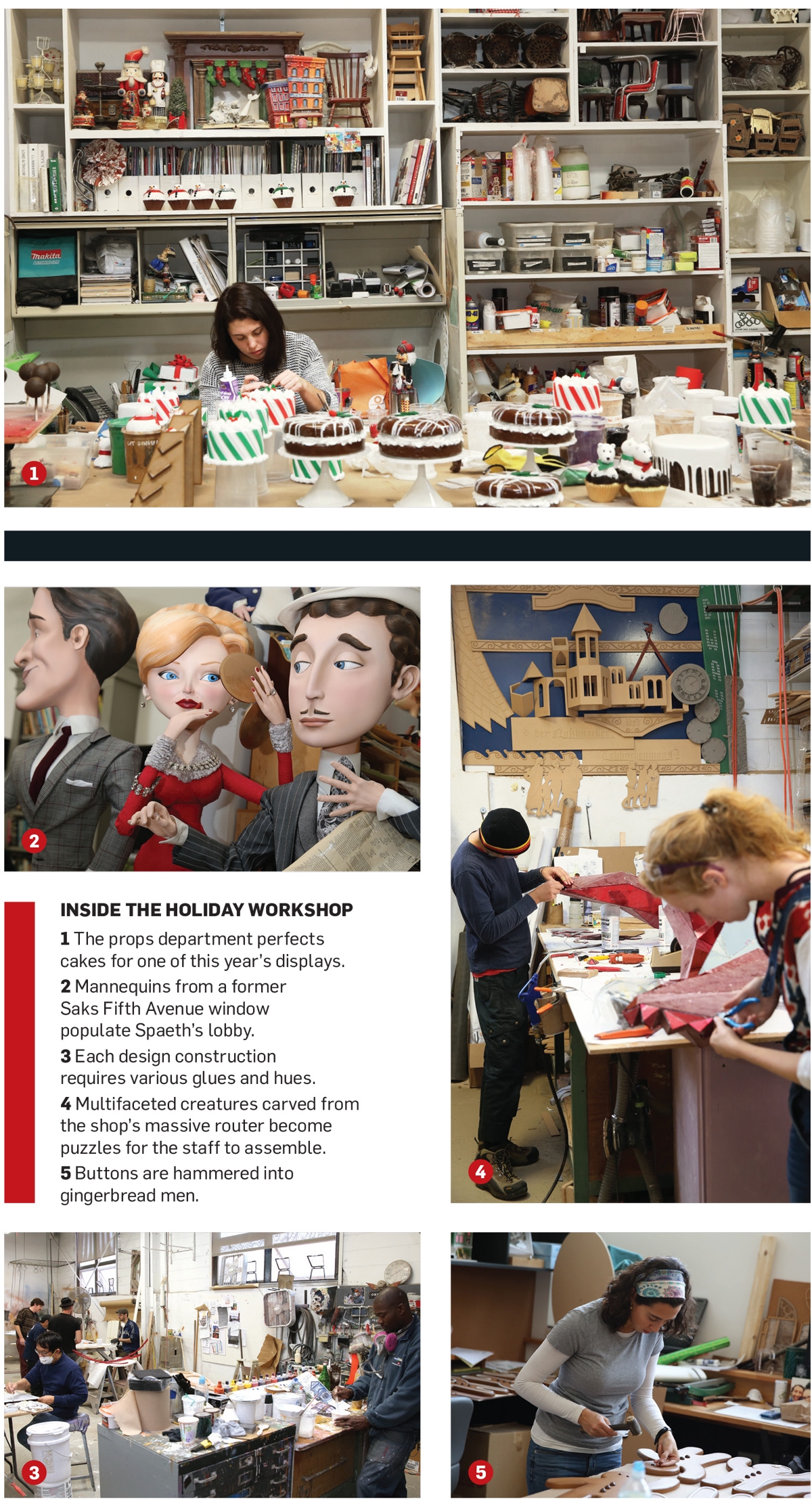Here’s Why the Spectacle of Holiday Windows Is Still Crucial for Brands
Tradition builds good will and foot traffic

Dozens of heads, torsos and rows of various dismembered limbs hang on the walls of a storage room in Spaeth Design's Queens, N.Y., office. They are labeled—'Macy's, '99, Fat Man'— and belong to the ghosts of holidays past, the dozens of mannequins that have at one time or another populated the fantastical world of the famous New York City holiday window displays of retailers like Bloomingdale's, Macy's, Lord & Taylor, Tiffany & Co., Saks Fifth Avenue and Bergdorf Goodman. You know, the windows people travel from all over the world to see between Thanksgiving and New Year's.
October is crunch time for Spaeth Design. It's one of the best-known design firms making up a small but critical cottage industry of decorating department store windows for the holidays.
It's a business that helps drive foot traffic (Lord & Taylor estimates that 500,000 people pass by its windows daily; Macy's clocks 15,000 people per hour during the holiday season, up from the typical 10,000 per hour) and ostensibly boosts sales—analysts say it's near impossible to evaluate, though they try.
Construction in the holiday workshop has kicked into high gear over the last few weeks, as the shop's nearly 60 employees (30 of which are full-time) labor to meet a fast-approaching deadline. Spaeth Design has been creating holiday windows for these major retailers for over 60 years, but talks with this year's main clients, Bloomingdale's and Lord & Taylor, started late.
"We're working as we should be delivering," explains David Spaeth, owner and CEO of the shop. Spaeth runs the firm with his wife Sandra, who serves as president.
All that pressure makes sense. The holiday season rings up some 25 percent of annual sales for retailers, and window displays influence purchase on average 24 percent of the time, according to NPD research. Meanwhile, the average consumer is projected to spend roughly $805.65 this year on holiday shopping, pushing November and December sales (excluding automotive, gas and restaurant purchases) to $630.7 billion, up 3.7 percent versus last year, according to the National Retail Foundation.
Of course, the bad news for brick-and-mortar stores is that, according to the NRF, 46 percent of all holiday shopping, browsing and buying this year will be done online.
"What do the stores want? They want you in the store, they need you in the store," says Marshal Cohen, NPD's chief industry analyst. "Impulse [buying] happens in the store 45 percent of the time; impulse [buying] happens online 18 percent of the time. It's so critical for them to drive traffic to the store and then ultimately try to get you into the store, even if it means doing things the old-fashioned way. Using windows and holiday displays, and turning it into a tradition to make it have everlasting life is a critical thing for them to do."
Every year by mid-November, the retailers reveal—with ever-increasing pomp and circumstance—their holiday displays, hoping that consumers will journey to the stores to see the windows in person. (Grumpy Cat and Nick Jonas were among last year's in-store holiday celebrities.) For thousands of families, going to see the windows is something that has become a tradition and been passed down from generation to generation. "Macy's windows have become an iconic, important tourist visit," says Roya Sullivan, the chain's national window director. "As that's happened over the years, the celebration and unveiling has become more prominent."

Read entire article at Adweek.com
Source: Adweek.com
Article by Kristina Monllos
MEDIA CONTACT:
KATY LASEE | MARKETING DEPT.
651 554 8533
KRLasee@traveltags.com
TAGS:





